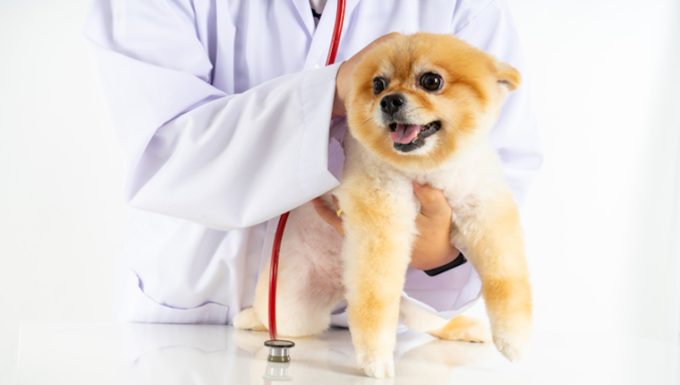Patent ductus arteriosis in dogs is a congenital heart defect. Technically, the condition is the second most common congenital heart problem in dogs.
Generally, the condition can cause heart murmurs, tiredness, and even collapse.
Unfortunately, certain breeds develop the condition more than normal. For example, these breeds include Chihuahuas, Pomeranians, and Miniature Poodles.
Technically, the condition is also called PDA.
If you see the signs of the condition in your dog, then get to a veterinarian for a proper diagnosis and treatment.
Here’s what you should know about the symptoms, causes, and treatments for the condition.
Symptoms of patent ductus arteriosis in dogs
The condition produces a wide range of symptoms. For example, some of the most common symptoms include:
- Avoiding exercise
- Heart murmurs
- Breathing problems
- Coughing
- Breathing very fast
- Skin and gums turning blue
- Collapse
- Fatigue
Causes of patent ductus arteriosis in dogs

The cause of the condition is usually genetics. For instance, some of the breeds that develop the condition the most include:
- Chihuahua
- Miniature Poodle
- Pomeranian
- Irish Setter
- Labrador Retriever
- German Shepherd
- Yorkshire Terrier
- Pomeranian
- English Springer Spaniel
Additionally, the following factors can cause the condition:
- Environment
- Diet
- Toxins
- Infections
Treatments for patent ductus arteriosis in dogs
Firstly, your vet will ask about your dog’s symptoms. Secondly, your vet will ask about your dog’s full medical history. This will include breed-specific problems.
Thirdly, your vet will carry out a full physical examination. Also, blood and urine tests will be taken. Additionally, ultrasounds and X-rays can monitor your dog’s heart.
Generally, treatment involves surgery. Specifically, a gap between your dog’s aorta and pulmonary artery will be closed. Usually, your dog will be under general anesthesia for this.
Normally, your dog will need their exercise limited while recovering. Your vet will come up with a plan for your dog. Additionally, a low sodium diet can help recovery.
Have you ever cared for a dog who suffered from this condition? How did your vet help your dog recover? Let us know in the comments section below.









